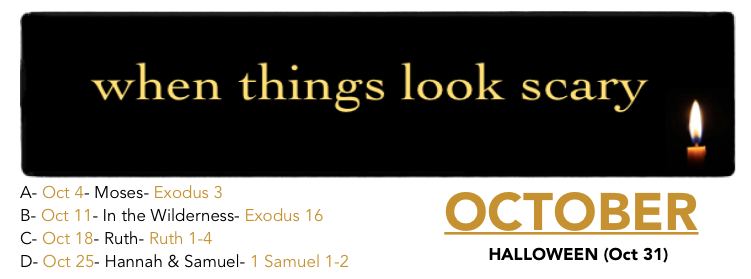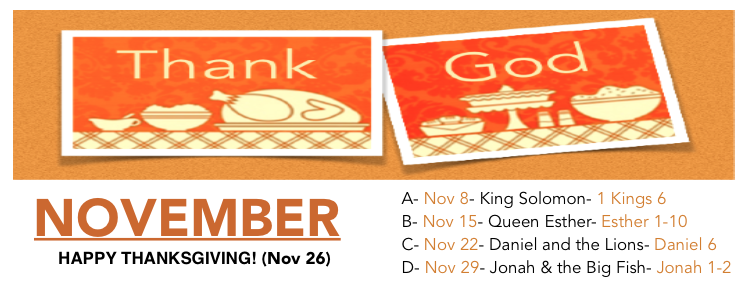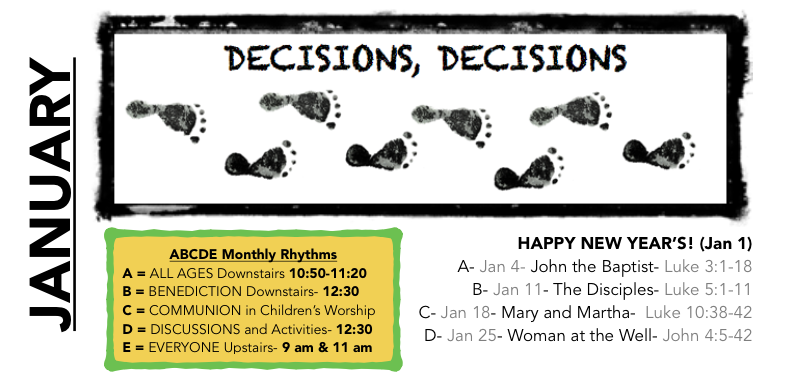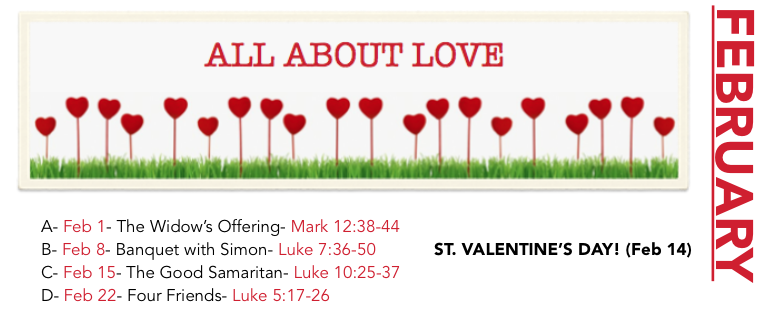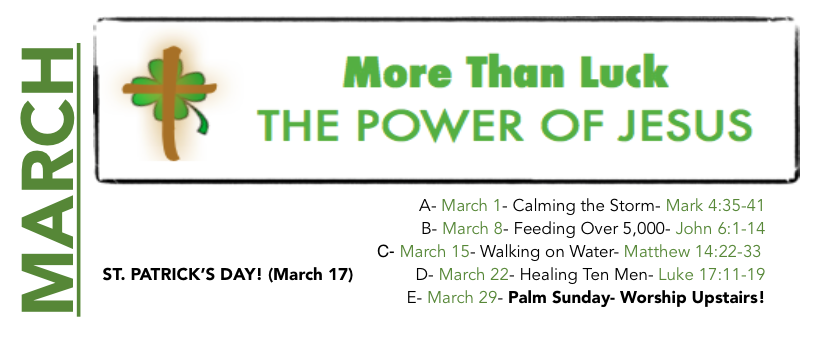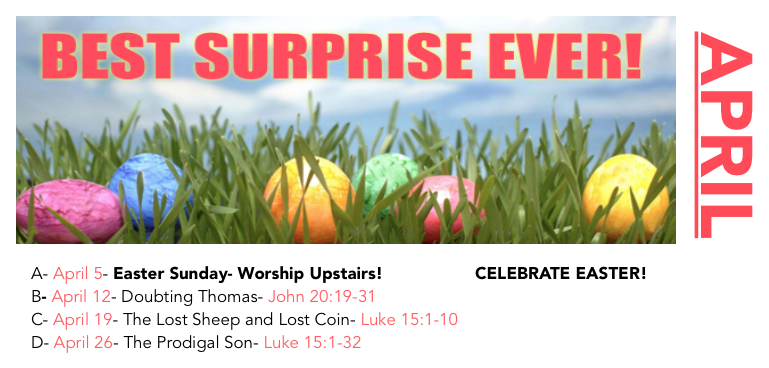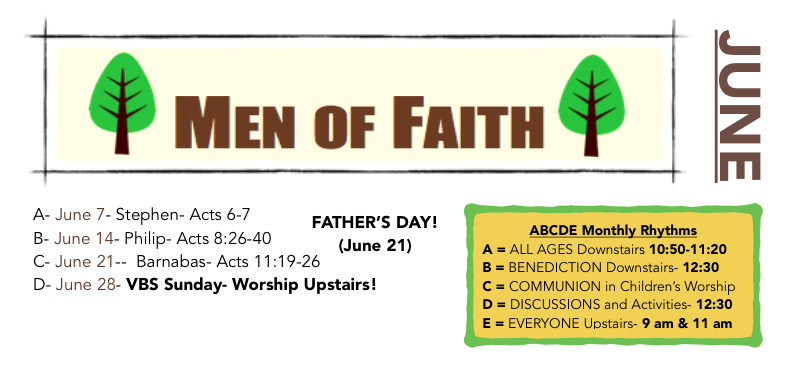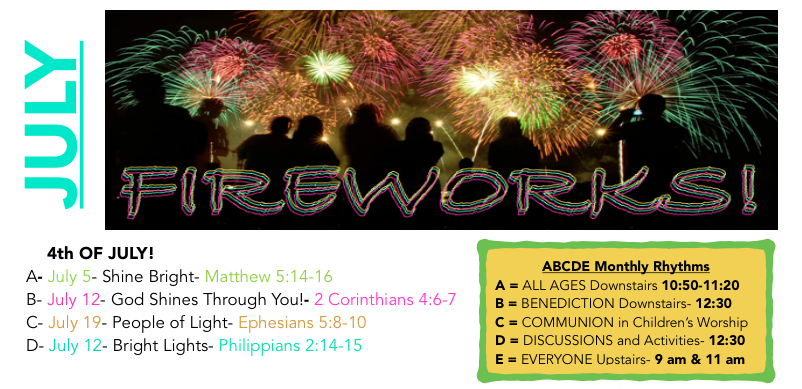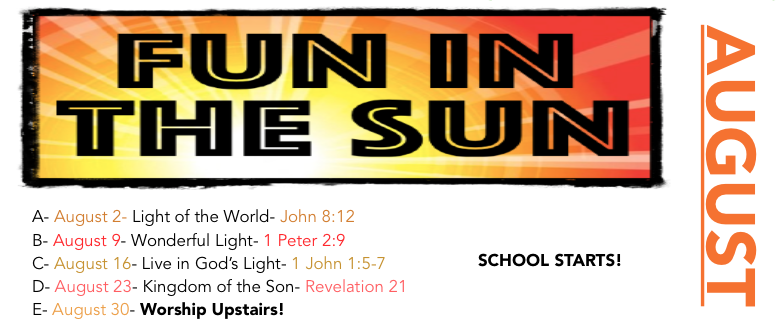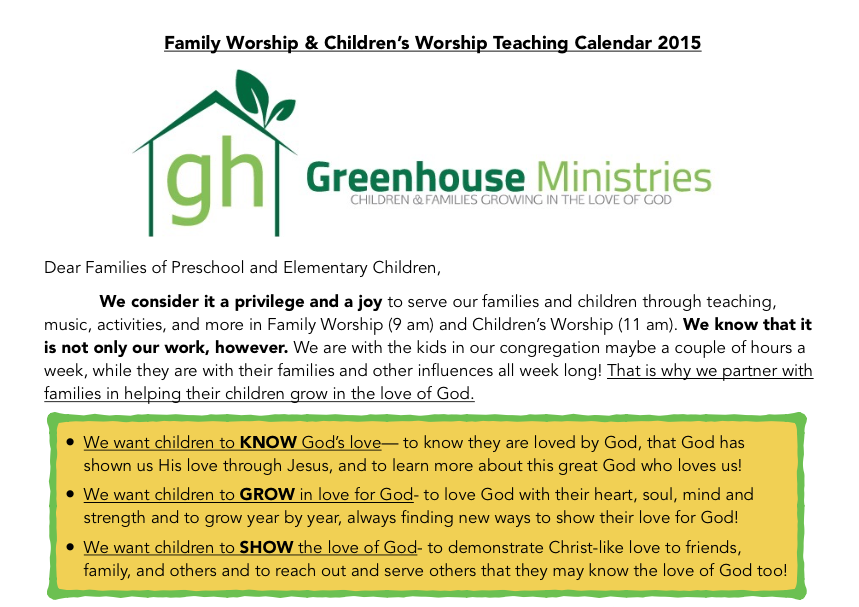
This is the scope and sequence of the children’s Sunday morning lessons that I plotted out for 2015 for Greenhouse Ministries at Poplar Creek Church. It brings together the resources we have with Sparkhouse Rotational Model (which have many materials we get to utilize), the Poplar Creek schedule and events, and our hope to guide our children through the Bible each year.
The Bible Year Scope and Sequence
As I looked at the school year and considered what themes were present in the lives of kids, parents, and families, I started marking certain months with certain themes. November = Giving Thanks. January = New Years Resolutions. April = Easter/New Life.
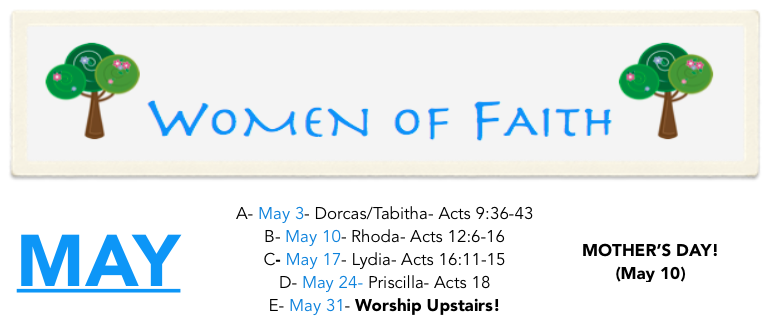
I know historically and in more traditional churches, the Christian year (or liturgical year or church year) influences teaching, worship, and special events. It would certainly be interesting to be in a church that followed the Christian year, but that is not my background nor current church culture. And perhaps this is my pessimistic thoughts about a post-Christian culture, but I can’t help but think that most families (unless they are deeply embedded in one of the churches above) are more influenced by the school calendar than the church calendar.
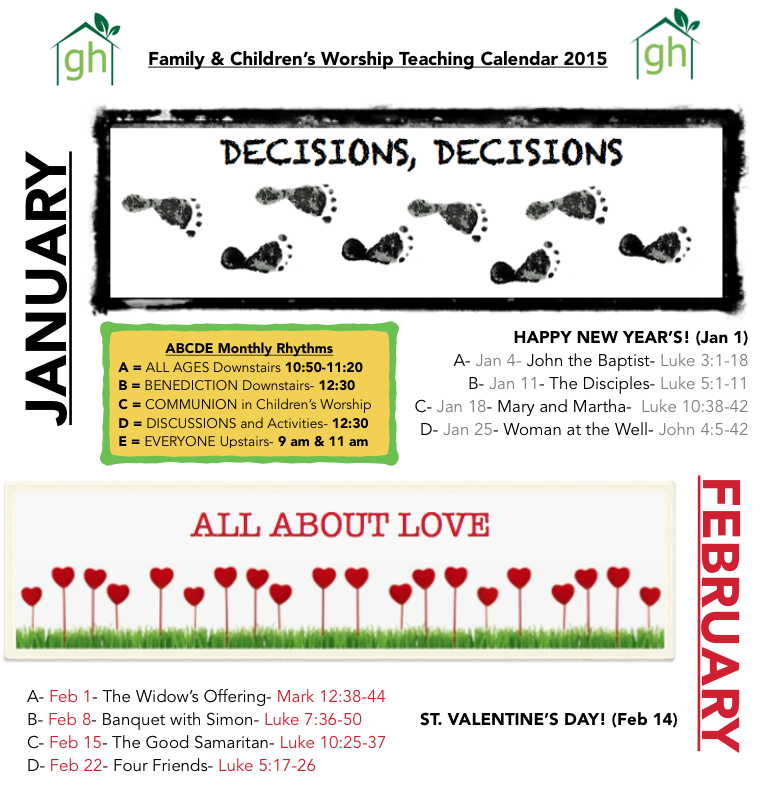
I’ve observed at my church that many events, programs, and plans often are deeply impacted by what is going on in school, sports, extra-curricular activities and academics. There’s certainly times where that may not be healthy, but it’s also a reality for many families– some don’t or can’t come to church because their son is in football, their daughter is playing soccer, their kids are in a school play, because one kid is having trouble in school that’s keeping them busy with homework and tutors.
So this calendar is, in some ways, rooted in the “school calendar”– but mainly because it starts in September and “ends” in May/June and has a couple summer months that are a little more open. The themes also operate monthly because I’ve found that we will often have a child come only once or twice a month– so if they miss the Sunday around Valentine’s Day, they miss the opportunity to learn about Christ’s love. So each month has a theme that influences each week.
Still, you can see that it moves from Genesis to the New Testament epistles. September starts with Beginnings (as it’s the beginning of the school year). The stories of Exodus and the Pentateuch are filled with the themes of trust in fear, and since Halloween comes at the end of October, we can focus on the fact that we can trust in God even when things look scary. November is all about giving thanks for leaders, especially the ones God sent to lead Israel. December lets us celebrate the birth of Christ– and that could be done through looking at the Gospels, but also by looking at the Prophets and seeing how they point us to Christ.
 January is all about making good “resolutions” or decisions, especially deciding to follow Jesus. February is all about love– but not just any love: the love of Jesus. You usually see four-leaf clovers everywhere in March, but that month we can focus on the power of Christ, not “luck.” April is all about the good, surprising news found in Jesus’ death and resurrection. In May and June we see Mother’s Day and Father’s Day, so we focus on women and men who followed Jesus as good examples (but we could also pull from the entire Bible if we wanted). July and August are a little more open-ended– they have great themes that match summer events, but you could do many different lessons in that range. Or just do something completely different. And then we’re back at September!
January is all about making good “resolutions” or decisions, especially deciding to follow Jesus. February is all about love– but not just any love: the love of Jesus. You usually see four-leaf clovers everywhere in March, but that month we can focus on the power of Christ, not “luck.” April is all about the good, surprising news found in Jesus’ death and resurrection. In May and June we see Mother’s Day and Father’s Day, so we focus on women and men who followed Jesus as good examples (but we could also pull from the entire Bible if we wanted). July and August are a little more open-ended– they have great themes that match summer events, but you could do many different lessons in that range. Or just do something completely different. And then we’re back at September!
There’s also something that I’ve tried to implement at Poplar– the Monthly Rhythms. The idea there is that we have certain family practices through the month so that we give families chances to pray together, worship together, talk about Communion, and just spend time together at church. 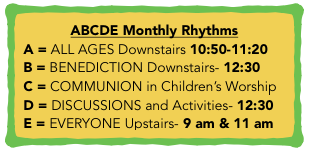 One of the weaknesses of modern church culture is how we segregate everyone based on age. The corresponding strength there is that we can teach, play, and interact with infants, toddlers, preschoolers, children, junior highers, high school students, college students, young adults, parents, older adults, seniors, and others with appropriate language, practices, and expectations. So I’ve tried with the Monthly Rhythms to find one small thing we can invite parents and family members to do each Sunday to have them interact with their kids at church. First Sundays (A) we invite families to participate in family activities, service opportunities, games and our Greenhouse worship gathering for the first 10-20 minutes of the 11:00 Children’s Worship service. Second Sundays of the month (B Sundays) we invite families to join us for a benediction immediately after Children’s Worship– we have a benediction each week, but the kids that are always downstairs don’t get to be there for it, so this was a chance to involve them. Third Sundays (C) we invite families to determine whether their children can participate in Communion, which we have at some point in the Greenhouse worship gathering. On Fourth Sundays (D), we try to have some sort of family event, discussion time, or family discussion materials for parents and kids to enjoy. Finally, on Fifth Sundays (E Sundays), we have no separate children’s services (other than Nursery) so that families can spend the entire worship service together.
One of the weaknesses of modern church culture is how we segregate everyone based on age. The corresponding strength there is that we can teach, play, and interact with infants, toddlers, preschoolers, children, junior highers, high school students, college students, young adults, parents, older adults, seniors, and others with appropriate language, practices, and expectations. So I’ve tried with the Monthly Rhythms to find one small thing we can invite parents and family members to do each Sunday to have them interact with their kids at church. First Sundays (A) we invite families to participate in family activities, service opportunities, games and our Greenhouse worship gathering for the first 10-20 minutes of the 11:00 Children’s Worship service. Second Sundays of the month (B Sundays) we invite families to join us for a benediction immediately after Children’s Worship– we have a benediction each week, but the kids that are always downstairs don’t get to be there for it, so this was a chance to involve them. Third Sundays (C) we invite families to determine whether their children can participate in Communion, which we have at some point in the Greenhouse worship gathering. On Fourth Sundays (D), we try to have some sort of family event, discussion time, or family discussion materials for parents and kids to enjoy. Finally, on Fifth Sundays (E Sundays), we have no separate children’s services (other than Nursery) so that families can spend the entire worship service together.
Finally, the idea of the Bible Year Scope and Sequence is that the themes could be repeated year in, year out and the stories could certainly remain (there are plenty different activities and lessons from these stories that would simply build upon each other each year) or you could find other stories that correspond with that theme and that chronological section of the Bible (ex: could do another miracle in March that still shows Jesus’ power). This is by no means perfect. I hope to develop these materials more over time. But this is a humble attempt to help families grow together and to guide children through the Bible year. So for now, here is the Bible Year Scope and Sequence. (Name also might change…) Click below to view a pdf.


